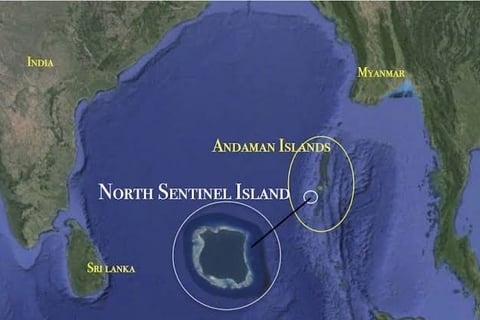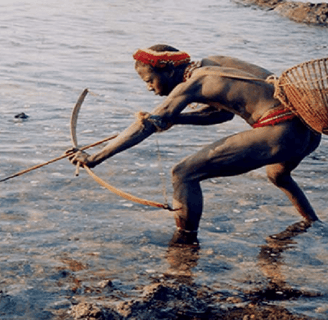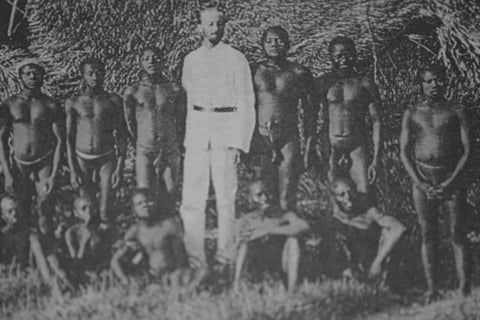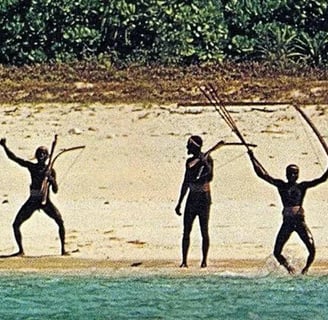North Sentinel Island: India’s Mysterious Forbidden Land
Hidden deep in the Bay of Bengal, North Sentinel Island is one of the most isolated and dangerous places on Earth. Home to the fiercely protective Sentinelese tribe, the island is completely off-limits to outsiders. With rumors of cannibalism, violent encounters, and unexplored mysteries, this forbidden land remains shrouded in secrecy. Why is the island so dangerous, and what makes it so controversial? Read the blog to uncover the chilling truths behind this mysterious and deadly island.
MISCELLANEOUS
Deepita
3/21/20255 min read
Hidden deep in the Bay of Bengal, North Sentinel Island is home to one of the last uncontacted and most isolated tribes in the world—the Sentinelese people. Known for their fierce hostility towards outsiders, the tribe has lived in voluntary isolation for thousands of years.
What makes the Sentinelese truly fascinating is that they have remained largely unchanged for millennia, preserving prehistoric ways of life. With no known agriculture, written language, or modern tools, they continue to live as hunter-gatherers, cut off from the rest of the world.
In this article, we’ll dive into the mysterious history of the Sentinelese, their origins, encounters with the outside world, and the controversies surrounding their isolation.
The Origins of the Sentinelese Tribe
The Sentinelese tribe's origins trace back to the earliest human migrations out of Africa, with evidence suggesting they've resided on North Sentinel Island for as long as 60,000 years. This profound isolation has fostered a distinct genetic and cultural heritage, marked by a language unique even among other Andamanese groups. Genetic studies suggest they share a common ancestry with other indigenous groups of the Andaman Islands, but their long-standing isolation has made them culturally and genetically distinct.
Anthropologists speculate that the tribe’s arrival on North Sentinel Island occurred thousands of years ago, long before recorded history. Despite their ancient origins, their language, customs, and traditions remain a complete mystery to the outside world. Their uninterrupted existence makes them one of the last surviving pre-Neolithic communities, offering a rare glimpse into humanity’s earliest ways of life.
Lifestyle and Survival Instincts
The Sentinelese tribe are self-sufficient hunter-gatherers, relying entirely on the natural resources of their remote island. Despite having no modern tools or technology, they have perfected the art of survival. Their diet consists of wild animals, such as wild pigs and turtles, along with freshly caught fish and fruits and plants. Armed with handcrafted bows, arrows, and spears made from forest materials, they skilfully hunt and defend their territory.
For shelter, the Sentinelese build simple yet sturdy huts from palm leaves and bamboo, forming small settlements hidden deep within the forest. Interestingly, unlike many indigenous groups, they don’t practice agriculture, depending solely on nature’s bounty. One of the greatest mysteries surrounding them is their fire-making technique—while it remains unknown, some experts believe they preserve fire from natural sources, such as lightning strikes.
Language, Beliefs & Customs
The language and culture of the Sentinelese remain a complete mystery, as no outsider has ever understood their speech or customs. Linguists speculate that their language may be linked to other Andamanese dialects, but due to the tribe’s extreme isolation, it remains unclassified and undeciphered. Their cultural practices are equally elusive—the tribe engages in ritualistic hunting and gathering, but their spiritual beliefs and social structures are entirely unknown.
When it comes to technology, the Sentinelese display remarkable resourcefulness. They craft stone-tipped arrows, spears, and tools using forest materials and debris washed ashore. Interestingly, they have been observed to reject metal tools left by outsiders, possibly viewing them as foreign or threatening. Some anthropologists speculate that the Sentinelese might have no concept of the outside world, perceiving passing ships or airplanes as supernatural phenomena. Their uncharted language and mysterious customs make them one of the most isolated tribes on the planet.
Violent Encounters
Maurice Vidal Portman (1880)
In 1880, British naval officer Maurice Vidal Portman led an expedition to North Sentinel Island, hoping to establish contact.
He kidnapped an elderly couple and four children, hoping to "civilize" them.
Tragically, the elderly couple died of disease, and the children were returned, possibly exposing the tribe to deadly pathogens.
Indian Government Survey (1970)
During surveys, the Indian government and anthropological teams attempted to establish contact with the Sentinelese.
They offered gifts such as aluminium cookware, coconuts, and other items as peace offerings.
Despite the peaceful gestures, the Sentinelese consistently rejected all contact attempts. They responded with aggression, most notably by firing arrows at the survey teams.
The tribe’s hostility demonstrated their unwavering commitment to isolation. Their aggressive defence highlighted their deep-seated mistrust of outsiders.
These hostile encounters influenced the Indian government to change its approach. Authorities adopted a “hands-off” policy, prioritizing the protection of the Sentinelese and respecting their right to isolation.
Indian fishermen killed (2006)
In 2006, two Indian fishermen, Sunder Raj and Pandit Tiwari, were killed by the Sentinelese. Their boat accidentally drifted too close to North Sentinel Island while they were harvesting crabs nearby.
The Sentinelese, perceiving the fishermen as intruders, attacked and killed them with arrows. They buried the bodies on the island, following their customs.
The Indian Coast Guard attempted to retrieve the bodies. Despite being attacked with arrows, they managed to recover one of the bodies.
John Allen Chau (2018)
John Allen Chau was a 26-year-old American missionary and adventurer. He was deeply religious and aimed to convert the Sentinelese to Christianity.
In November 2018, Chau paid local fishermen to illegally take him near North Sentinel Island, despite the strict no-contact law. On his first approach, the Sentinelese fired arrows, one of which pierced his Bible. He made several attempts to return, determined to preach Christianity.
On November 17, 2018, Chau made his final attempt. As he reached the shore, he was attacked and killed by the Sentinelese, who dragged his body along the beach.
The local fishermen who helped Chau reach the island were arrested for violating Indian law. However, no action was taken against the Sentinelese, as they were protected under Indian law. The Indian government refused to retrieve Chau’s body, respecting the Sentinelese tribe’s isolation.
The Necessity of Non-Interference
Leaving the Sentinelese tribe undisturbed is not just a matter of respecting their autonomy—it is crucial for their survival and cultural preservation. The Sentinelese have lived in isolation for thousands of years, with no immunity to modern diseases. Even a brief encounter with outsiders could introduce fatal pathogens, potentially wiping out their entire population. Their hostility towards contact is a clear indication of their desire for solitude—a right that must be honored. Moreover, interfering with their way of life risks eroding their ancient culture, which has remained unchanged for millennia. The Indian government’s strict no-contact policy reflects the importance of safeguarding this fragile community. Ultimately, leaving the Sentinelese alone is not just about respecting their wishes—it is about preserving one of the last uncontacted human civilizations, allowing them to continue living on their own terms, free from external threats.
The Sentinelese tribe’s fierce hostility towards outsiders is not a sign of savagery but a powerful testament to their determination to protect their people and way of life. Their resistance has preserved their ancient culture, making them one of the last remaining untouched tribes on Earth.
While the allure of uncovering their secrets is tempting, it is essential to respect their right to remain isolated. Their hostility is not an act of aggression—it is a symbol of survival.










